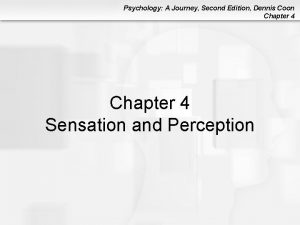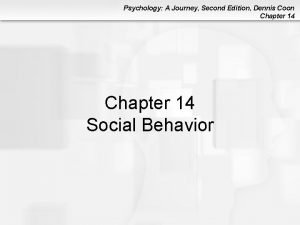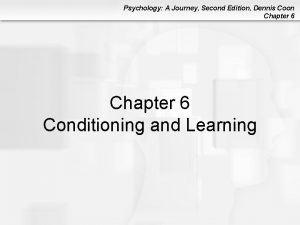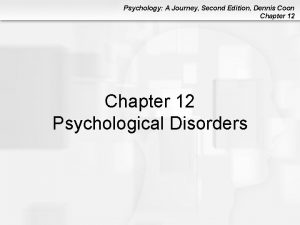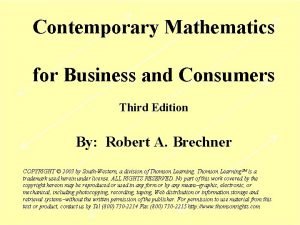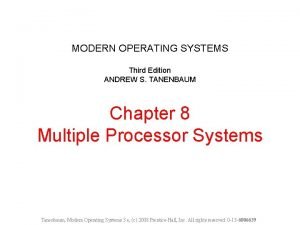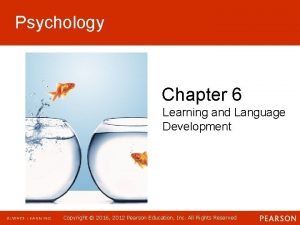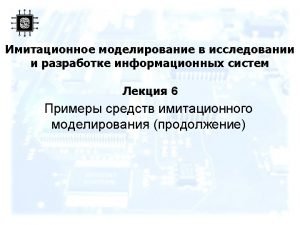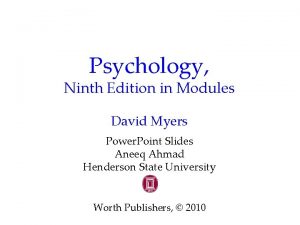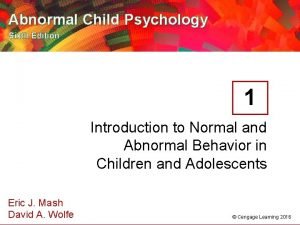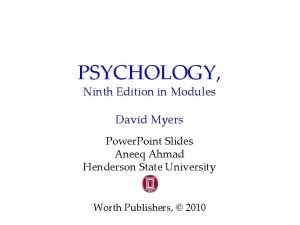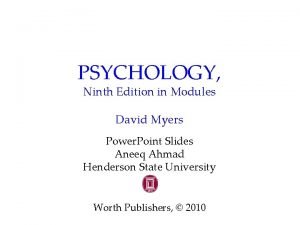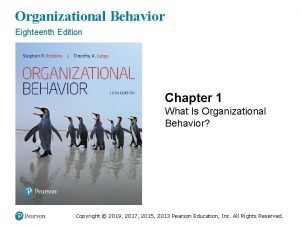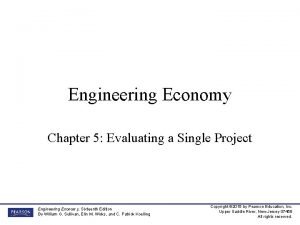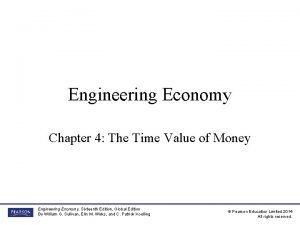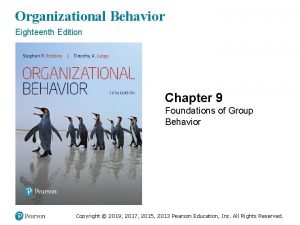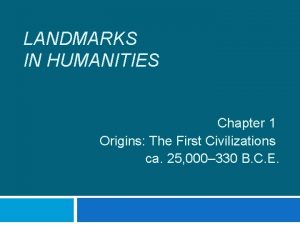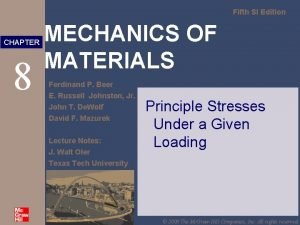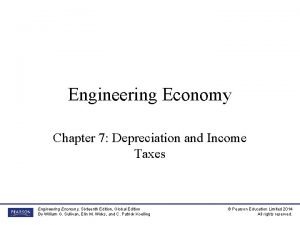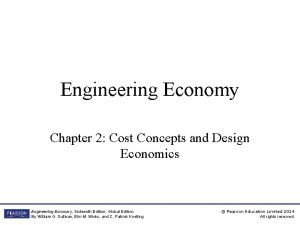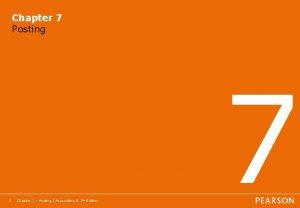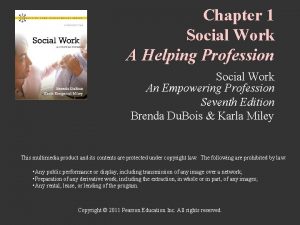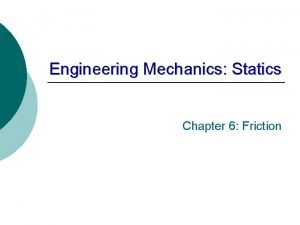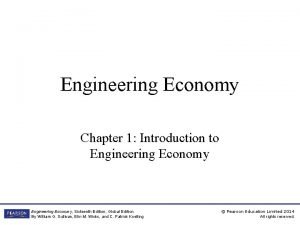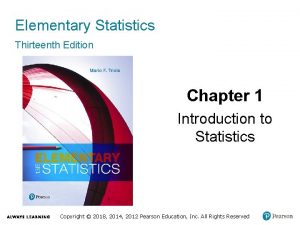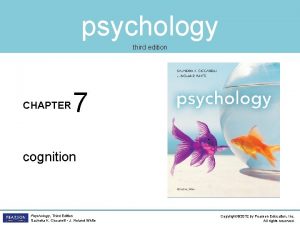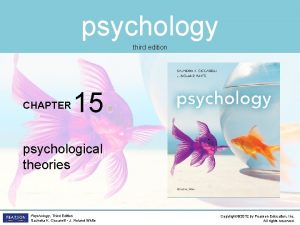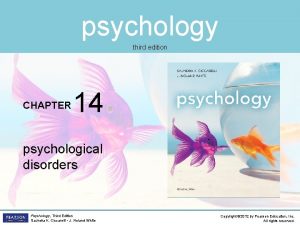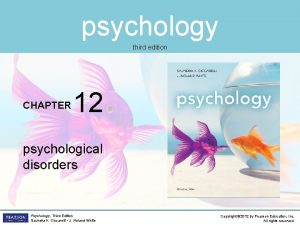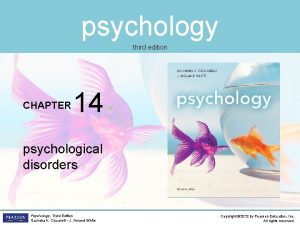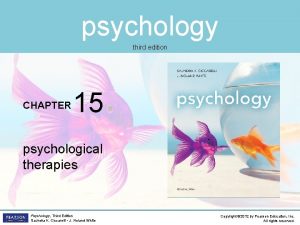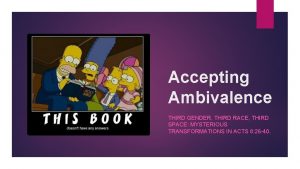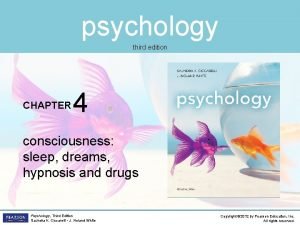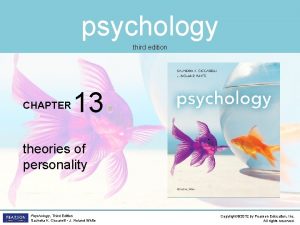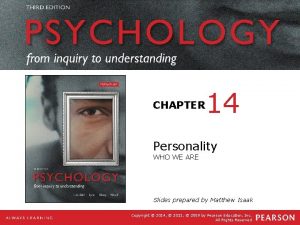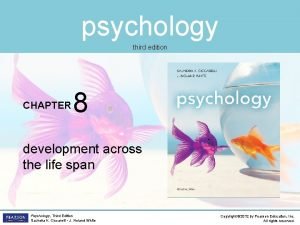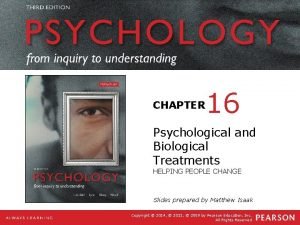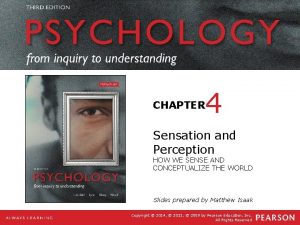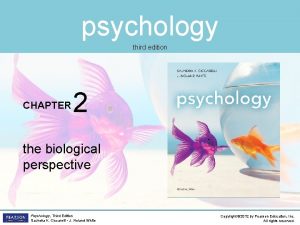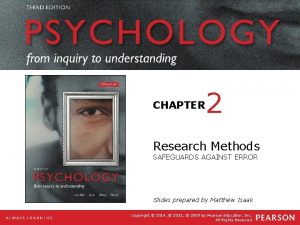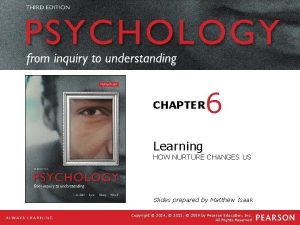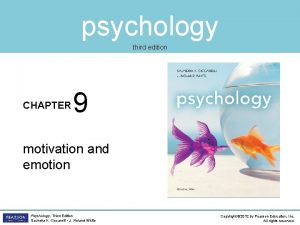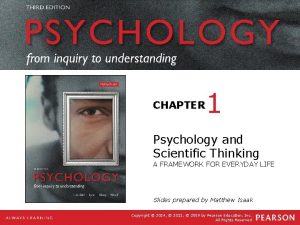psychology third edition CHAPTER 5 learning Psychology Third





































































- Slides: 69

psychology third edition CHAPTER 5 learning Psychology, Third Edition Saundra K. Ciccarelli • J. Noland White Copyright © 2012 by Pearson Education, Inc. All rights reserved.

Learning Objectives • • • • LO 5. 1 LO 5. 2 LO 5. 3 LO 5. 4 LO 5. 5 LO 5. 6 LO 5. 7 LO 5. 8 LO 5. 9 LO 5. 10 LO 5. 11 LO 5. 12 LO 5. 13 Learning Classical Conditioning Conditioned Emotional Response Operant Conditioning: Thorndike and Skinner Important Concepts in Operant Conditioning Schedules of Reinforcement How Does Punishment Differ from Reinforcement? What Are Some Problems with Punishment? How Operant Stimuli Control Behavior Modification Cognitive Learning Theory Observational Learning Real-World Example of the Use of Conditioning Psychology, Third Edition Saundra K. Ciccarelli • J. Noland White Copyright © 2012 by Pearson Education, Inc. All rights reserved.

What is Learning? LO 5. 1 Learning • Learning: any relatively permanent change in behavior brought about by experience or practice – When people learn anything, some part of their brain is physically changed to record what they have learned. – Any kind of change in the way an organism behaves is learning. Psychology, Third Edition Saundra K. Ciccarelli • J. Noland White Copyright © 2012 by Pearson Education, Inc. All rights reserved.

Pavlov and Classical Conditioning LO 5. 2 Classical Conditioning • Ivan Pavlov: Russian physiologist (person who studies the workings of the body) who discovered classical conditioning through his work on digestion in dogs • Classical conditioning: learning to make a reflex response to a stimulus other than the original, natural stimulus that normally produces the reflex Psychology, Third Edition Saundra K. Ciccarelli • J. Noland White Copyright © 2012 by Pearson Education, Inc. All rights reserved.

Classical Conditioning Concepts LO 5. 2 Classical Conditioning • Unconditioned stimulus (UCS): a naturally occurring stimulus that leads to an involuntary response – Unconditioned means “unlearned” or “naturally occurring. ” • Unconditioned response (UCR): an involuntary response to a naturally occurring or unconditioned stimulus Psychology, Third Edition Saundra K. Ciccarelli • J. Noland White Copyright © 2012 by Pearson Education, Inc. All rights reserved.

Classical Conditioning Concepts LO 5. 2 Classical Conditioning • Conditioned stimulus (CS): stimulus that becomes able to produce a learned reflex response by being paired with the original unconditioned stimulus – Conditioned means “learned. ” – A neutral stimulus can become a conditioned stimulus when paired with an unconditioned stimulus. Psychology, Third Edition Saundra K. Ciccarelli • J. Noland White Copyright © 2012 by Pearson Education, Inc. All rights reserved.

Classical Conditioning Concepts LO 5. 2 Classical Conditioning • Conditioned response (CR): learned reflex response to a conditioned stimulus – sometimes called a conditioned reflex – CS: ice cream truck – CR: salivation when hear ice cream truck bell Psychology, Third Edition Saundra K. Ciccarelli • J. Noland White Copyright © 2012 by Pearson Education, Inc. All rights reserved.

Classical Conditioning UCS Loud Noise CS Bunny Rabbit Psychology, Third Edition Saundra K. Ciccarelli • J. Noland White UCS Loud Noise UCR Startle Copyright © 2012 by Pearson Education, Inc. All rights reserved.

Classical Conditioning UCS Dog Bite CS Sight of Dog Psychology, Third Edition Saundra K. Ciccarelli • J. Noland White UCS Dog Bite UCR Frightened Copyright © 2012 by Pearson Education, Inc. All rights reserved.

Classical Conditioning UCS Car Crash CS Squealing Brakes Psychology, Third Edition Saundra K. Ciccarelli • J. Noland White UCS Car Crash UCR Racing Heart Copyright © 2012 by Pearson Education, Inc. All rights reserved.

Classical Conditioning UCS Kiss CS Sight of Significant Other Psychology, Third Edition Saundra K. Ciccarelli • J. Noland White UCS Kiss UCR Racing Heart Copyright © 2012 by Pearson Education, Inc. All rights reserved.

Figure 5. 1 Classical Conditioning Before conditioning takes place, the sound of the metronome does not cause salivation and is a neutral stimulus, or NS. During conditioning, the sound of the metronome occurs just before the presentation of the food, the UCS. The food causes salivation, the UCR. When conditioning has occurred after several pairings of the metronome with the food, the metronome will begin to elicit a salivation response from the dog without any food. This is learning, and the sound of the metronome is now a CS and the salivation to the bell is the CR. Psychology, Third Edition Saundra K. Ciccarelli • J. Noland White Copyright © 2012 by Pearson Education, Inc. All rights reserved.

Classical Conditioning Concepts LO 5. 2 Classical Conditioning • Acquisition: the repeated pairing of the NS and the UCS; the organism is in the process of acquiring learning – Although classical conditioning happens quite easily, there a few basic principles that researchers have discovered: § The CS must come before the UCS. § The CS and UCS must come very close together in time— ideally, only several seconds apart. § The neutral stimulus must be paired with the UCS several times, often many times, before conditioning can take place. Psychology, Third Edition Saundra K. Ciccarelli • J. Noland White Copyright © 2012 by Pearson Education, Inc. All rights reserved.

Classical Conditioning Concepts LO 5. 2 Classical Conditioning • The CS is usually some stimulus that is distinctive or stands out from other competing stimuli. • Stimulus generalization: the tendency to respond to a stimulus that is only similar to the original conditioned stimulus with the conditioned response Psychology, Third Edition Saundra K. Ciccarelli • J. Noland White Copyright © 2012 by Pearson Education, Inc. All rights reserved.

Classical Conditioning Concepts LO 5. 2 Classical Conditioning • Stimulus discrimination: the tendency to stop making a generalized response to a stimulus that is similar to the original conditioned stimulus because the similar stimulus is never paired with the unconditioned stimulus Psychology, Third Edition Saundra K. Ciccarelli • J. Noland White Copyright © 2012 by Pearson Education, Inc. All rights reserved.

Classical Conditioning Concepts LO 5. 2 Classical conditioning • Extinction: the disappearance or weakening of a learned response following the removal or absence of the unconditioned stimulus (in classical conditioning) or the removal of a reinforcer (in operant conditioning) Psychology, Third Edition Saundra K. Ciccarelli • J. Noland White Copyright © 2012 by Pearson Education, Inc. All rights reserved.

Figure 5. 2 Strength of the Generalized Response An example of stimulus generalization. The UCS was an electric shock and the UCR was the galvanic skin response (GSR), a measure associated with anxiety. The subjects had been conditioned originally to a CS tone (0) of a given frequency. When tested with the original tone, and with tones 1, 2, and 3 of differing frequencies, a clear generalization effect appeared. The closer the frequency of the test tone to the frequency of tone 0, the greater was the magnitude of the galvanic skin response to the tone (Hovland, 1937). Psychology, Third Edition Saundra K. Ciccarelli • J. Noland White Copyright © 2012 by Pearson Education, Inc. All rights reserved.

Figure 5. 3 Extinction and Spontaneous Recovery This graph shows the acquisition, extinction, spontaneous recovery, and reacquisition of a conditioned salivary response. Typically, the measure of conditioning is the number of drops of saliva elicited by the CS on each trial. Note that on the day following extinction, the first presentation of the CS elicits quite a large response. Psychology, Third Edition Saundra K. Ciccarelli • J. Noland White Copyright © 2012 by Pearson Education, Inc. All rights reserved.

Classical Conditioning Concepts LO 5. 2 Classical Conditioning • Spontaneous recovery: the reappearance of a learned response after extinction has occurred – Learning is a relatively permanent change in behavior. • Higher-order conditioning: occurs when a strong conditioned stimulus is paired with a neutral stimulus, causing the neutral stimulus to become a seconditioned stimulus Psychology, Third Edition Saundra K. Ciccarelli • J. Noland White Copyright © 2012 by Pearson Education, Inc. All rights reserved.

Conditioned Emotional Response LO 5. 3 Conditioned Emotional Response • Conditioned emotional response (CER): emotional response that has become classically conditioned to occur to learned stimuli, such as a fear of dogs or the emotional reaction that occurs when seeing an attractive person – CERs may lead to phobias—irrational fear responses. Psychology, Third Edition Saundra K. Ciccarelli • J. Noland White Copyright © 2012 by Pearson Education, Inc. All rights reserved.

Figure 5. 5 Conditioning of “Little Albert” After “Little Albert” had been conditioned to fear a white rat, he also demonstrated fear to a rabbit, a dog, and a sealskin coat (although it remains uncertain if stimulus generalization actually occurred as this fear was to a single rabbit, a single dog, etc. ). Can you think of any emotional reactions you experience that might be classically conditioned emotional responses? Psychology, Third Edition Saundra K. Ciccarelli • J. Noland White Copyright © 2012 by Pearson Education, Inc. All rights reserved.

Taste Aversion LO 5. 3 Conditioned Emotional Response • Vicarious conditioning: classical conditioning of a reflex response or emotion by watching the reaction of another person • Conditioned taste aversion: development of a nausea or aversive response to a particular taste because that taste was followed by a nausea reaction, occurring after only one association Psychology, Third Edition Saundra K. Ciccarelli • J. Noland White Copyright © 2012 by Pearson Education, Inc. All rights reserved.

Taste Aversion LO 5. 3 Conditioned Emotional Response • Biological preparedness: the tendency of animals to learn certain associations, such as taste and nausea, with only one or few pairings due to the survival value of the learning Psychology, Third Edition Saundra K. Ciccarelli • J. Noland White Copyright © 2012 by Pearson Education, Inc. All rights reserved.

Why Classical Conditioning Works LO 5. 3 Conditioned Emotional Response • Stimulus substitution: original theory in which Pavlov stated that classical conditioning occurred because the conditioned stimulus became a substitute for the unconditioned stimulus by being paired closely together Psychology, Third Edition Saundra K. Ciccarelli • J. Noland White Copyright © 2012 by Pearson Education, Inc. All rights reserved.

Why Classical Conditioning Works LO 5. 3 Conditioned Emotional Response • Cognitive perspective: modern theory in which classical conditioning is seen to occur because the conditioned stimulus provides information or an expectancy about the coming of the unconditioned stimulus Psychology, Third Edition Saundra K. Ciccarelli • J. Noland White Copyright © 2012 by Pearson Education, Inc. All rights reserved.

Operant Conditioning LO 5. 4 Operant Conditioning: Thorndike and Skinner • Operant conditioning: the learning of voluntary behavior through the effects of pleasant and unpleasant consequences to responses Psychology, Third Edition Saundra K. Ciccarelli • J. Noland White Copyright © 2012 by Pearson Education, Inc. All rights reserved.

Operant Conditioning LO 5. 4 Operant Conditioning: Thorndike and Skinner • Thorndike’s law of effect: if a response is followed by a pleasurable consequence, it will tend to be repeated; if followed by an unpleasant consequence, it will tend not to be repeated Psychology, Third Edition Saundra K. Ciccarelli • J. Noland White Copyright © 2012 by Pearson Education, Inc. All rights reserved.

Skinner’s Contribution LO 5. 4 Operant Conditioning: Thorndike and Skinner • Skinner was a behaviorist; he wanted to study only observable, measurable behavior. • Gave “operant conditioning” its name – operant: any behavior that is voluntary • Learning depends on what happens after the response: the consequence. Psychology, Third Edition Saundra K. Ciccarelli • J. Noland White Copyright © 2012 by Pearson Education, Inc. All rights reserved.

Figure 5. 7 A Typical Skinner Box This rat is learning to press the bar in the wall of the cage in order to get food (delivered a few pellets at a time in the food trough on lower left). In some cases, the light on the top left might be turned on to indicate that pressing the bar will lead to food or to warn of an impending shock delivered by the grate on the floor of the cage. Psychology, Third Edition Saundra K. Ciccarelli • J. Noland White Copyright © 2012 by Pearson Education, Inc. All rights reserved.

Reinforcement LO 5. 4 Operant Conditioning: Thorndike and Skinner • Reinforcement: any event or stimulus, that when following a response, increases the probability that the response will occur again – primary reinforcer: any reinforcer that is naturally reinforcing by meeting a basic biological need, such as hunger, thirst, or touch Psychology, Third Edition Saundra K. Ciccarelli • J. Noland White Copyright © 2012 by Pearson Education, Inc. All rights reserved.

Reinforcement LO 5. 4 Operant Conditioning: Thorndike and Skinner • Reinforcement: any event or stimulus, that when following a response, increases the probability that the response will occur again – secondary reinforcer: any reinforcer that becomes reinforcing after being paired with a primary reinforcer, such as praise, tokens, or gold stars Psychology, Third Edition Saundra K. Ciccarelli • J. Noland White Copyright © 2012 by Pearson Education, Inc. All rights reserved.

Positive and Negative Reinforcement LO 5. 5 Important Concepts in Operant Conditioning • Positive reinforcement: the reinforcement of a response by the addition or experiencing of a pleasurable stimulus • Negative reinforcement: the reinforcement of a response by the removal, escape from, or avoidance of an unpleasant stimulus – Example: Taking aspirin for a headache is negatively reinforced: removal of headache! Psychology, Third Edition Saundra K. Ciccarelli • J. Noland White Copyright © 2012 by Pearson Education, Inc. All rights reserved.

Shaping LO 5. 5 Important Concepts in Operant Conditioning • Shaping: the reinforcement of simple steps in behavior that lead to a desired, more complex behavior – successive approximations: small steps in behavior, one after the other, that lead to a particular goal behavior – Penny Operant conditioning Psychology, Third Edition Saundra K. Ciccarelli • J. Noland White Copyright © 2012 by Pearson Education, Inc. All rights reserved.

Other Classical Conditioning Concepts LO 5. 5 Important Concepts in Operant Conditioning • Extinction occurs if the behavior (response) is not reinforced. • Operantly conditioned responses also can be generalized to stimuli that are only similar—not identical—to the original stimulus. Psychology, Third Edition Saundra K. Ciccarelli • J. Noland White Copyright © 2012 by Pearson Education, Inc. All rights reserved.

Psychology, Third Edition Saundra K. Ciccarelli • J. Noland White Copyright © 2012 by Pearson Education, Inc. All rights reserved.

Other Classical Conditioning Concepts LO 5. 5 Important Concepts in Operant Conditioning • Spontaneous recovery (reoccurrence of a once extinguished response) also happens in operant conditioning. – One way to deal with a child’s temper tantrum is to ignore it. The lack of reinforcement for the tantrum behavior will eventually result in extinction. Psychology, Third Edition Saundra K. Ciccarelli • J. Noland White Copyright © 2012 by Pearson Education, Inc. All rights reserved.

Schedules of Reinforcement LO 5. 6 Schedules of Reinforcement • Partial reinforcement effect: the tendency for a response that is reinforced after some—but not all—correct responses to be very resistant to extinction • Continuous reinforcement: the reinforcement of each and every correct response Psychology, Third Edition Saundra K. Ciccarelli • J. Noland White Copyright © 2012 by Pearson Education, Inc. All rights reserved.

Schedules of Reinforcement LO 5. 6 Schedules of Reinforcement • Fixed ratio schedule of reinforcement: schedule of reinforcement in which the number of responses required for reinforcement is always the same • Variable interval schedule of reinforcement: schedule of reinforcement in which the interval of time that must pass before reinforcement becomes possible is different for each trial or event Psychology, Third Edition Saundra K. Ciccarelli • J. Noland White Copyright © 2012 by Pearson Education, Inc. All rights reserved.

Schedules of Reinforcement LO 5. 6 Schedules of Reinforcement • Fixed interval schedule of reinforcement: schedule of reinforcement in which the interval of time that must pass before reinforcement becomes possible is always the same Psychology, Third Edition Saundra K. Ciccarelli • J. Noland White Copyright © 2012 by Pearson Education, Inc. All rights reserved.

Schedules of Reinforcement LO 5. 6 Schedules of Reinforcement • Variable ratio schedule of reinforcement: schedule of reinforcement in which the number of responses required for reinforcement is different for each trial or event Psychology, Third Edition Saundra K. Ciccarelli • J. Noland White Copyright © 2012 by Pearson Education, Inc. All rights reserved.

Figure 5. 8 Schedules of Reinforcement These four graphs show the typical pattern of responding for both fixed and variable interval and ratio schedules of reinforcement. The responses are cumulative, which means new responses are added to those that come before, and all graphs begin after the learned pattern is well established. Slash marks mean that a reinforcement has been given. In both the fixed interval and fixed ratio graphs, there is a pause after each reinforcement as the learner briefly “rests. ” The “scalloped” shape of the fixed interval curve is a typical indicator of this pause, as is the stair-step shape of the fixed ratio curve. In the variable interval and ratio schedules, no such pause occurs, because the reinforcements are unpredictable. Notice that both fixed and variable interval schedules are slower (less steep) than the two ratio schedules because of the need to respond as quickly as possible in the ratio schedules. Psychology, Third Edition Saundra K. Ciccarelli • J. Noland White Copyright © 2012 by Pearson Education, Inc. All rights reserved.

Punishment LO 5. 7 How Does Punishment Differ from Reinforcement? • Punishment: any event or object that, when following a response, makes that response less likely to happen again • Punishment by application: the punishment of a response by the addition or experiencing of an unpleasant stimulus • Punishment by removal: the punishment of a response by the removal of a pleasurable stimulus Psychology, Third Edition Saundra K. Ciccarelli • J. Noland White Copyright © 2012 by Pearson Education, Inc. All rights reserved.

Punishment has several drawbacks. LO 5. 8 What Are Some Problems with Punishment? • Severe punishment may cause avoidance of the punisher instead of the behavior being punished. • Severe punishment may encourage lying to avoid punishment. • Severe punishment creates fear and anxiety. Psychology, Third Edition Saundra K. Ciccarelli • J. Noland White Copyright © 2012 by Pearson Education, Inc. All rights reserved.

Psychology, Third Edition Saundra K. Ciccarelli • J. Noland White Copyright © 2012 by Pearson Education, Inc. All rights reserved.

Psychology, Third Edition Saundra K. Ciccarelli • J. Noland White Copyright © 2012 by Pearson Education, Inc. All rights reserved.

How to Make Punishment More Effective LO 5. 8 What Are Some Problems with Punishment? • Punishment should immediately follow the behavior it is meant to punish. • Punishment should be consistent. • Punishment of the wrong behavior should be paired, whenever possible, with reinforcement of the right behavior. Psychology, Third Edition Saundra K. Ciccarelli • J. Noland White Copyright © 2012 by Pearson Education, Inc. All rights reserved.

Operant Stimuli and Stimulus Control LO 5. 9 How Operant Stimuli Control Behavior • Discriminative stimulus: any stimulus, such as a stop sign or a doorknob, that provides the organism with a cue for making a certain response in order to obtain reinforcement • Shaping: the reinforcement of simple steps that leads to a desired complex behavior Psychology, Third Edition Saundra K. Ciccarelli • J. Noland White Copyright © 2012 by Pearson Education, Inc. All rights reserved.

Operant Stimuli and Stimulus Control LO 5. 9 How Operant Stimuli Control Behavior • Successive approximations: small steps, one after another, that lead to a particular goal behavior Psychology, Third Edition Saundra K. Ciccarelli • J. Noland White Copyright © 2012 by Pearson Education, Inc. All rights reserved.

Behavior Resistant to Conditioning LO 5. 9 How Operant Stimuli Control Behavior • Instinctive drift: tendency for an animal’s behavior to revert to genetically controlled patterns – Each animal comes into the world (and the laboratory) with certain genetically determined instinctive patterns of behavior already in place. – These instincts differ from species to species. Psychology, Third Edition Saundra K. Ciccarelli • J. Noland White Copyright © 2012 by Pearson Education, Inc. All rights reserved.

Behavior Resistant to Conditioning LO 5. 9 How Operant Stimuli Control Behavior • Instinctive drift (cont’d) – There are some responses that simply cannot be trained into an animal regardless of conditioning. Psychology, Third Edition Saundra K. Ciccarelli • J. Noland White Copyright © 2012 by Pearson Education, Inc. All rights reserved.

Behavior Resistant to Conditioning LO 5. 9 How Operant Stimuli Control Behavior • Raccoons commonly dunk their food in and out of water before eating. This “washing” behavior is controlled by instinct, and is difficult to change even using operant techniques. Psychology, Third Edition Saundra K. Ciccarelli • J. Noland White Copyright © 2012 by Pearson Education, Inc. All rights reserved.

Behavior Modification LO 5. 10 Behavior Modification • Behavior modification: the use of operant conditioning techniques to bring about desired changes in behavior • Token economy: type of behavior modification in which desired behavior is rewarded with tokens Psychology, Third Edition Saundra K. Ciccarelli • J. Noland White Copyright © 2012 by Pearson Education, Inc. All rights reserved.

Behavior Modification LO 5. 10 Behavior Modification • Time-out: a form of mild punishment by removal in which a misbehaving animal, child, or adult is placed in a special area away from the attention of others. – Essentially, the organism is being “removed” from any possibility of positive reinforcement in the form of attention. Psychology, Third Edition Saundra K. Ciccarelli • J. Noland White Copyright © 2012 by Pearson Education, Inc. All rights reserved.

Behavior Modification LO 5. 10 Behavior Modification • Applied behavior analysis (ABA): modern term for a form of behavior modification that uses shaping techniques to mold a desired behavior or response Psychology, Third Edition Saundra K. Ciccarelli • J. Noland White Copyright © 2012 by Pearson Education, Inc. All rights reserved.

Biofeedback and Neurofeedback LO 5. 10 Behavior Modification • Biofeedback: the use of feedback about biological conditions to bring involuntary responses such as blood pressure and relaxation under voluntary control • Neurofeedback: form of biofeedback using brainscanning devices (f. MRI) to provide feedback about brain activity in an effort to modify behavior Psychology, Third Edition Saundra K. Ciccarelli • J. Noland White Copyright © 2012 by Pearson Education, Inc. All rights reserved.

Cognitive Learning Theory LO 5. 11 Cognitive Learning Theory • In the early days of learning, researchers’ focus was on behavior. • In the 1950 s—and more intensely in the 1960 s—many psychologists were becoming aware that cognition, the mental events that take place inside a person’s mind while behaving, could no longer be ignored. Psychology, Third Edition Saundra K. Ciccarelli • J. Noland White Copyright © 2012 by Pearson Education, Inc. All rights reserved.

Latent Learning LO 5. 11 Cognitive Learning Theory • Edward Tolman: early cognitive scientist – Edward Tolman’s best-known experiments in learning involved teaching three groups of rats the same maze, one at a time (Tolman & Honzik, 1930 b). Psychology, Third Edition Saundra K. Ciccarelli • J. Noland White Copyright © 2012 by Pearson Education, Inc. All rights reserved.

Latent Learning LO 5. 11 Cognitive Learning Theory • Edward Tolman’s Maze Experiment – Group 1: rewarded each time at end of maze § learned maze quickly – Group 2: in maze every day; only rewarded on 10 th day. § demonstrated learning of maze almost immediately after receiving reward – Group 3: never rewarded § did not learn maze well Psychology, Third Edition Saundra K. Ciccarelli • J. Noland White Copyright © 2012 by Pearson Education, Inc. All rights reserved.

Latent Learning LO 5. 11 Cognitive Learning Theory • Latent learning: learning that remains hidden until its application becomes useful Psychology, Third Edition Saundra K. Ciccarelli • J. Noland White Copyright © 2012 by Pearson Education, Inc. All rights reserved.

Figure 5. 9 A Typical Maze This is an example of a maze such as the one used in Tolman’s experiments in latent learning. A rat is placed in the start box. The trial is over when the rat gets to the end box. Psychology, Third Edition Saundra K. Ciccarelli • J. Noland White Copyright © 2012 by Pearson Education, Inc. All rights reserved.

Figure 5. 10 Learning Curves for Three Groups of Rats In the results of the classic study of latent learning, Group 1 was rewarded on each day, while Group 2 was rewarded for the first time on Day 11. Group 3 was never rewarded. Note the immediate change in the behavior of Group 2 on Day 12 (Tolman & Honzik, 1930). Psychology, Third Edition Saundra K. Ciccarelli • J. Noland White Copyright © 2012 by Pearson Education, Inc. All rights reserved.

Insight - Kohler LO 5. 11 Cognitive Learning Theory • Insight: the sudden perception of relationships among various parts of a problem, allowing the solution to the problem to come quickly – cannot be gained through trial-and-error learning alone – “Aha” moment Psychology, Third Edition Saundra K. Ciccarelli • J. Noland White Copyright © 2012 by Pearson Education, Inc. All rights reserved.

Learned Helplessness: Seligman LO 5. 11 Cognitive Learning Theory • Learned helplessness: the tendency to fail to act to escape from a situation because of a history of repeated failures in the past Psychology, Third Edition Saundra K. Ciccarelli • J. Noland White Copyright © 2012 by Pearson Education, Inc. All rights reserved.

Figure 5. 11 Seligman’s Apparatus In Seligman’s studies of learned helplessness, dogs were placed in a two-sided box. Dogs that had no prior experience with being unable to escape a shock would quickly jump over the hurdle in the center of the box to land on the “safe” side. Dogs that had previously learned that escape was impossible would stay on the side of the box in which the shock occurred, not even trying to go over the hurdle. Psychology, Third Edition Saundra K. Ciccarelli • J. Noland White Copyright © 2012 by Pearson Education, Inc. All rights reserved.

Observational Learning: Bandura LO 5. 12 Observational Learning • Observational learning: learning new behavior by watching a model perform that behavior • Learning/performance distinction: learning can take place without actual performance of the learned behavior. Psychology, Third Edition Saundra K. Ciccarelli • J. Noland White Copyright © 2012 by Pearson Education, Inc. All rights reserved.

Figure 5. 12 Bandura’s Bobo Doll Experiment In Albert Bandura’s famous Bobo doll experiment, the doll was used to demonstrate the impact of observing an adult model performing aggressive behavior on the later aggressive behavior of children. The children in these photos are imitating the adult model’s behavior even though they believe they are alone and are not being watched. Psychology, Third Edition Saundra K. Ciccarelli • J. Noland White Copyright © 2012 by Pearson Education, Inc. All rights reserved.

Four Elements of Observational Learning • Attention – To learn anything through observation, the learner must first pay attention to the model. • Memory – The learner must also be able to retain the memory of what was done, such as remembering the steps in preparing a dish that were first seen on a cooking show. Psychology, Third Edition Saundra K. Ciccarelli • J. Noland White Copyright © 2012 by Pearson Education, Inc. All rights reserved.

Four Elements of Observational Learning • Imitation – The learner must be capable of reproducing, or imitating, the actions of the model. • Motivation – Finally, the learner must have the desire to perform the action. – An easy way to remember the four elements of modeling is to remember the letters AMIM, which stands for the first letters of each of the four elements. Psychology, Third Edition Saundra K. Ciccarelli • J. Noland White Copyright © 2012 by Pearson Education, Inc. All rights reserved.

Real-World Example LO 5. 13 Real-World Example of the Use of Conditioning • Training a cat to use the toilet will involve: – shaping – preparing “the training arena” – positive reinforcement on a variable schedule Psychology, Third Edition Saundra K. Ciccarelli • J. Noland White Copyright © 2012 by Pearson Education, Inc. All rights reserved.
 Schachter singer theory
Schachter singer theory Psychology
Psychology Psychology a journey 4th edition chapter 1
Psychology a journey 4th edition chapter 1 Psychology a journey 4th edition chapter 1
Psychology a journey 4th edition chapter 1 Psychology a journey
Psychology a journey Using mis (10th edition) 10th edition
Using mis (10th edition) 10th edition Chapter 1
Chapter 1 Cuadro comparativo e-learning b-learning m-learning
Cuadro comparativo e-learning b-learning m-learning Principles of economics third edition oxford pdf
Principles of economics third edition oxford pdf Organic chemistry (3rd) edition chapter 1 problem 20s
Organic chemistry (3rd) edition chapter 1 problem 20s Organic chemistry third edition david klein
Organic chemistry third edition david klein Business mathematics third edition
Business mathematics third edition Distributed systems third edition
Distributed systems third edition Fundamentals of corporate finance canadian edition
Fundamentals of corporate finance canadian edition Fundamentals of corporate finance 3rd canadian edition
Fundamentals of corporate finance 3rd canadian edition Lifespan development third edition
Lifespan development third edition Lifespan development third edition
Lifespan development third edition Essential cell biology
Essential cell biology Graphical display
Graphical display Odontoclasia meaning
Odontoclasia meaning Senile caries
Senile caries Psychology chapter 6 learning
Psychology chapter 6 learning Altruistic
Altruistic Least mean square algorithm in neural network
Least mean square algorithm in neural network Transductive reasoning psychology
Transductive reasoning psychology Anylogic personal learning edition
Anylogic personal learning edition Psychology ninth edition in modules
Psychology ninth edition in modules David myers psychology 9th edition
David myers psychology 9th edition Psychology eighth edition david g myers
Psychology eighth edition david g myers Abnormal child psychology 6th edition
Abnormal child psychology 6th edition Psychology eighth edition david g myers
Psychology eighth edition david g myers Fundamentals of abnormal psychology ninth edition
Fundamentals of abnormal psychology ninth edition General adaptation syndrome
General adaptation syndrome Social psychology ninth edition
Social psychology ninth edition Psychology tenth edition in modules
Psychology tenth edition in modules Psychology ninth edition in modules
Psychology ninth edition in modules Humanistik maslow
Humanistik maslow Organizational behavior chapter 1
Organizational behavior chapter 1 Organic chemistry (3rd) edition chapter 1 problem 16s
Organic chemistry (3rd) edition chapter 1 problem 16s Ferdinand beer
Ferdinand beer Mechanics of materials 6th edition beer solution chapter 7
Mechanics of materials 6th edition beer solution chapter 7 Mechanics
Mechanics Chapter 5 mechanics of materials solutions
Chapter 5 mechanics of materials solutions Beer and johnson
Beer and johnson Everything's an argument 8th edition chapter 1
Everything's an argument 8th edition chapter 1 Chapter 6 portable fire extinguishers
Chapter 6 portable fire extinguishers Engineering economy 16th edition chapter 5 solutions
Engineering economy 16th edition chapter 5 solutions Deffered annuity
Deffered annuity Business essentials 12th edition chapter 1
Business essentials 12th edition chapter 1 Prehospital care 11th edition
Prehospital care 11th edition Organizational behavior 18th edition chapter 1
Organizational behavior 18th edition chapter 1 Landmark in humanities 5th edition
Landmark in humanities 5th edition Infant child and adolescent berk 8th edition chapter 1
Infant child and adolescent berk 8th edition chapter 1 Beer mechanics of materials 6th edition chapter 4 solutions
Beer mechanics of materials 6th edition chapter 4 solutions Mechanics of materials 6th edition beer solution chapter 3
Mechanics of materials 6th edition beer solution chapter 3 Adler and rodman 2006
Adler and rodman 2006 Understanding business 12th edition chapter 1
Understanding business 12th edition chapter 1 Security in computing 5th edition ppt
Security in computing 5th edition ppt Financial accounting ifrs 4th edition chapter 12
Financial accounting ifrs 4th edition chapter 12 Principles of management by stephen robbins 13th edition
Principles of management by stephen robbins 13th edition Beer johnston
Beer johnston Engineering economy 16th edition chapter 5 solutions
Engineering economy 16th edition chapter 5 solutions Engineering economy 16th edition solution
Engineering economy 16th edition solution Cost concepts and design economics
Cost concepts and design economics Emergency care 13th edition
Emergency care 13th edition Accounting 1 7th edition chapter 7
Accounting 1 7th edition chapter 7 Social work: an empowering profession 9th edition chapter 1
Social work: an empowering profession 9th edition chapter 1 Friction chapter in engineering mechanics
Friction chapter in engineering mechanics Engineering economy 16th edition chapter 1 solutions
Engineering economy 16th edition chapter 1 solutions Elementary statistics 13th edition chapter 1
Elementary statistics 13th edition chapter 1

